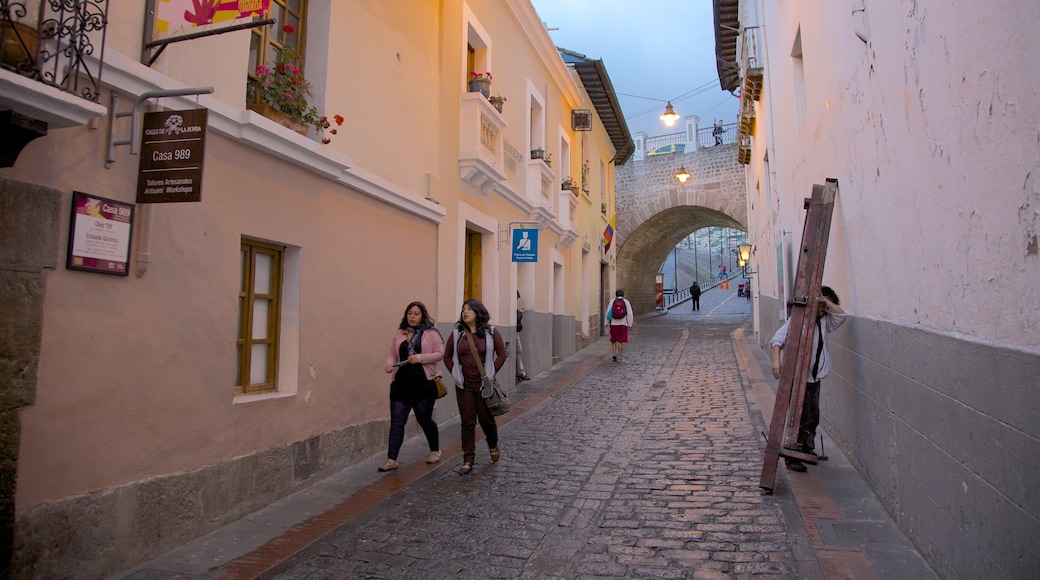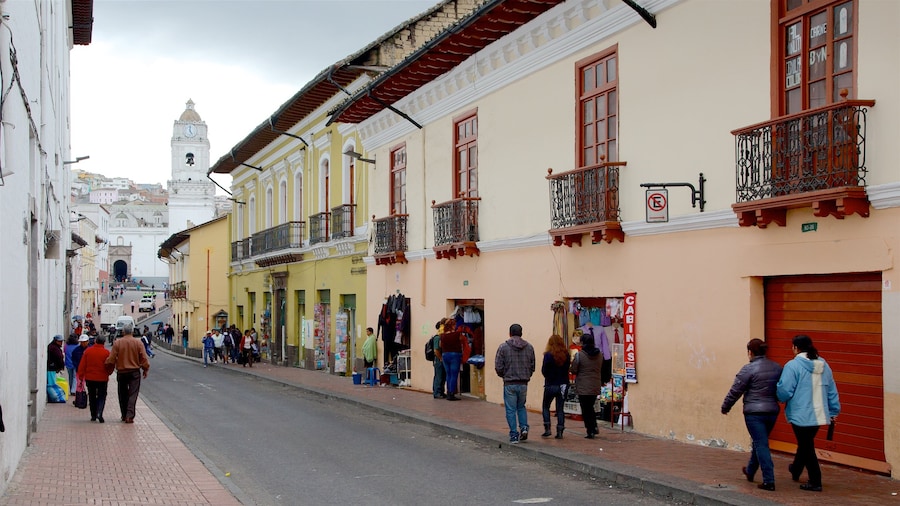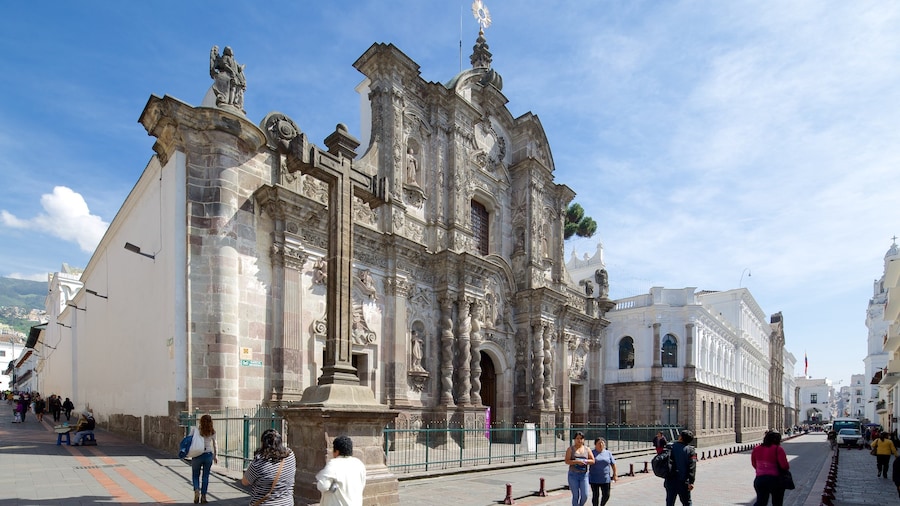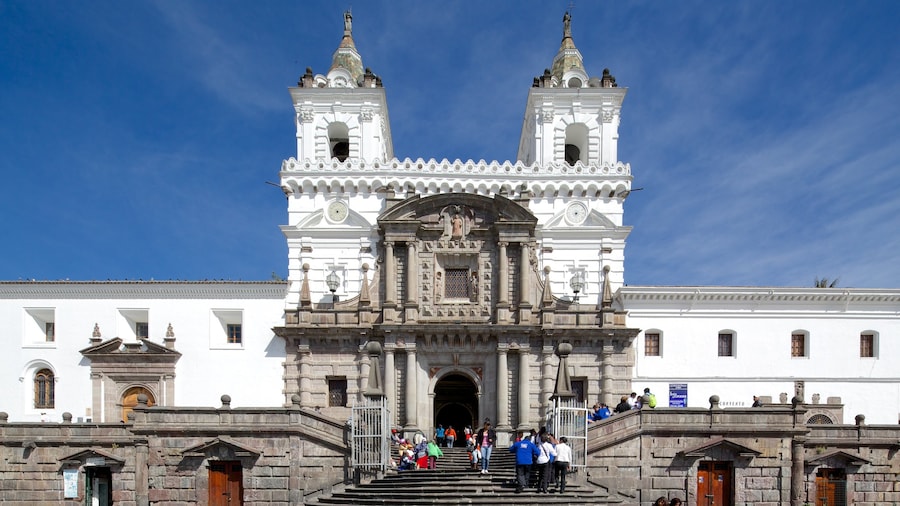Visit artisan shops, bohemian cafés and centuries-old houses as you wander this quaint cobblestone street on the edge of Quito’s historic center.
Stroll along Calle La Ronda for a glimpse into the culture and Spanish-era heritage of Quito. This lively pedestrian street is the place to explore historic buildings, sample traditional food, watch artisans at work and enjoy live entertainment. It’s said that Calle La Ronda’s history extends back to the 1400s when it was an Incan trail. Spanish colonists remodeled the street in the 18th century and by the early 1900s it was a favored hangout of artists, poets and musicians. The street was renamed Calle Juan de Dios Morales, but it’s still most commonly called La Ronda.
Note the colorful Spanish-built houses as you walk along the street. Check out the wrought-iron balconies adorned with colorful flowers and peek inside the doors to see attractive patio courtyards. Look for information signs that explain the history of some of the buildings. Among these buildings is El Murcielagario (Bat House), a secret basement bar frequented by musicians during the 1930s.
Artisan workshops and galleries have set up in the old houses. Observe as chocolatiers, milliners, silversmiths and musical-instrument makers ply their trade. Shop for handcrafted toys, Panama hats, indigenous art and textiles.
Listen as the sounds of live music spills out of the atmospheric bars. Smell the aromas of local delicacies, such as fresh quesadilla, a flour or corn tortilla filled with cheese. Savor the aromas of the warm spiced fruit drink with rum known as canelazo, the perfect accompaniment to a chilly evening. Watch as children play games of hopscotch and El Sapo (The Toad), which involves tossing coins into the mouth of a brass toad.
Situated on the southwest side of the Centro Histórico (Historic Center), Calle La Ronda is just a short walk from some of Quito’s main attractions. Public buses stop in the vicinity. Nearby attractions worth visiting include the Museo de la Ciudad (City Museum) and the striking Iglesia de la Compañia de Jesús (Church of the Society of Jesus).
Calle La Ronda is generally quiet during the day, but springs to life after dark. Police patrol the area, making it a safe place to visit at any time of the day.









